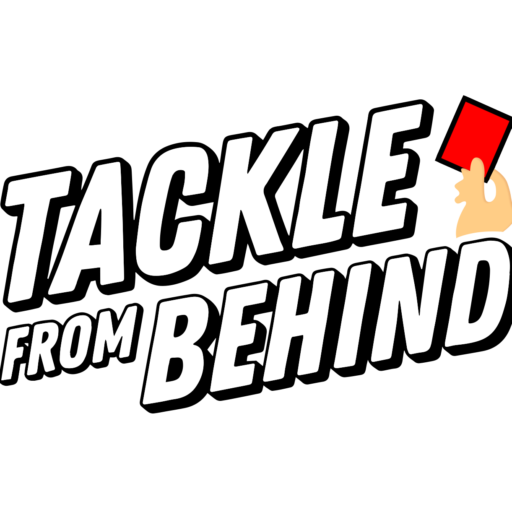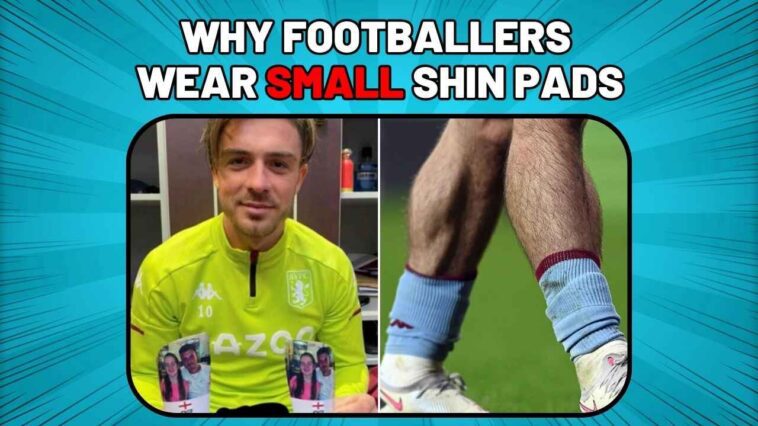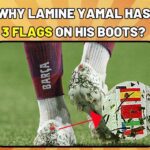Football gear has come a long way. One of the most interesting trends in recent times? The rise of smaller shin pads.
Yes, you read that right! Those big, clunky shin guards you probably wore during your early days of football are slowly being replaced by slim, barely-there versions.
But why is this happening? Are they even safe? And what’s with all the hype around them?
Let’s dive into why smaller shin pads are taking over the football world.
The Evolution of Shin Pads in Football
The Early Days of Shin Protection
Shin pads weren’t always a mandatory part of football. Back in the day, players used to play with minimal gear, which meant more injuries.
As the game grew faster and tackles got harder, shin protection became necessary.
Initially, shin pads were bulky and heavy, often making players feel restricted. Sure, they protected your legs, but they slowed you down. Not exactly ideal when you’re trying to sprint past defenders.
From Bulky to Barely There
Fast forward to today, and you’ll notice that more players are opting for smaller shin pads. From grassroots football to the professional stage, the trend is undeniable.
Look at top players like Jack Grealish—his shin pads are so small you’d think he forgot to wear them!
Why are they doing this? Simple. Football has become a faster game. Players want gear that offers protection without the bulk.
Why Smaller Shin Pads Are Trending
Speed and Agility are King
In modern football, the game is all about speed and quick feet. Whether you’re a winger trying to beat your man or a midfielder dodging tackles, you need to be agile.
Big shin pads can feel like a hindrance. They limit the natural movement of your legs, making it harder to twist, turn, and accelerate quickly.
They also feel heavier, which can make you slower in transitions—that split-second delay can be the difference between getting tackled or leaving a defender behind.
That’s where smaller shin pads come in. They’re lightweight, offer just enough protection, and don’t get in the way of your movements.
In a game where milliseconds matter, every little advantage counts.
Comfort and Flexibility
The newer, smaller shin pads are designed to be super flexible, which is a huge win for players. Unlike older, rigid shin guards that would press uncomfortably against your legs, these new versions mold to your legs and fit under your socks smoothly.
Players love the fact that they can barely feel them during the game, letting them focus entirely on their play without any distractions from uncomfortable gear.
Aesthetic Vibes – Look Good, Play Good
Let’s be honest. Football is not just about skill; it’s also about how you carry yourself on the pitch. And in today’s game, style matters.
You’ve probably noticed the way players like Grealish or Neymar wear their socks super low with tiny shin pads. It gives off a rebellious, carefree vibe. It’s almost like they’re saying, “I’m too quick for you to catch me, so I don’t need bulky protection.”
For many young footballers, this look is appealing. They want to replicate their idols, not just in how they play but also in how they dress on the pitch.
And let’s face it, smaller shin pads paired with low socks just look cooler. You feel quicker, lighter, and—most importantly—you look like a baller.
Less Bulk, More Control
For players who rely on their technical skills, like dribblers or playmakers, having bulky shin pads can feel like a distraction. The smaller ones allow for a closer touch on the ball, giving you more control.
In situations where a second touch could lose you the ball, this extra bit of confidence can make a huge difference.
The Rules on Shin Pads
What FIFA Says About Shin Pads
You might be wondering, with so many players opting for tiny shin pads, what are the official rules regarding them?
According to FIFA’s Laws of the Game, shin pads (or “shin guards”) are mandatory equipment for all players. They must be entirely covered by socks and be made of rubber, plastic, or a similar suitable material.
Their primary purpose, of course, is to offer reasonable protection against injuries.
However, FIFA doesn’t specify an exact size for shin pads. This means that while shin pads are required, there’s a lot of flexibility in terms of how big or small they can be.
As long as they’re providing some level of protection, referees are generally okay with it.
Do Referees Check Shin Pads?
In professional matches, referees do a pre-match check to ensure that all players are wearing the necessary equipment. But when it comes to the size of shin pads, it’s rarely enforced strictly.
This explains why players like Jack Grealish can get away with wearing what seems like minimal protection.
At the youth and amateur levels, however, referees might be a bit stricter, ensuring players wear shin pads that offer a more significant level of protection.
Are Smaller Shin Pads Safe?
The Protective Dilemma
Okay, so smaller shin pads look cool and let you move freely. But what about safety? After all, the whole point of shin guards is to protect your legs from nasty tackles.
It’s a tricky balance. Smaller shin pads do offer less protection than traditional, bigger ones. But for most players, the trade-off between protection and comfort seems worth it.
Plus, modern shin pads—no matter the size—are made from materials like carbon fiber and high-density foam, which offer decent protection despite their size.
For those who play in positions with less direct physical contact, such as wingers or attacking midfielders, this level of protection is often sufficient.
Position Matters
For more defensive players like center-backs or defensive midfielders, who are more likely to be on the receiving end of hard tackles, wearing smaller shin pads might not be the smartest choice.
The risk of injury from a strong challenge is much higher, so having extra protection could save you from serious harm.
Who’s Wearing Smaller Shin Pads?
The Jack Grealish Effect
If there’s one player who’s become the poster boy for smaller shin pads, it’s Jack Grealish. His signature look—tiny shin pads, low socks—has become iconic. And, of course, many young players are eager to copy it.
Grealish has openly talked about why he prefers smaller shin guards. For him, it’s all about comfort. He says he feels more in control of his movements when he’s not weighed down by bulky gear. Plus, let’s face it, his look has become a bit of a brand in itself.
Grealish isn’t the only one, though. Players across Europe’s top leagues are following suit. Players like Gallagher, Dominic Calvert-Lewinhave all seen rocking those shin pads.
From flashy forwards to composed midfielders, the trend is spreading fast.
Even youth players are embracing smaller shin pads. Walk into any football academy, and you’ll see plenty of kids sporting them.
The Future of Shin Pads
Tech Meets Fashion
As football evolves, so does the technology behind the gear. Smaller shin pads are here to stay, but don’t be surprised if we start seeing even more innovative designs.
Companies are already working on ultra-lightweight, high-protection materials that could change the game.
In the future, shin pads might not just be about protection. They could track player stats, monitor health metrics, or even adapt to different playing conditions.
Football gear is getting smarter, and shin pads are no exception.
Conclusion
So, why are smaller shin pads getting popular? It’s a mix of comfort, style, and performance. Players want to move freely, look good, and still have enough protection to avoid serious injuries.
While they may not offer the same level of safety as traditional shin guards, the balance between protection and agility seems to be worth it for many modern footballers.
At the end of the day, it’s about finding what works best for you. Whether you’re rocking the low-sock, small shin pad look or sticking with the classic bulky guards, the most important thing is that you feel confident on the pitch.



